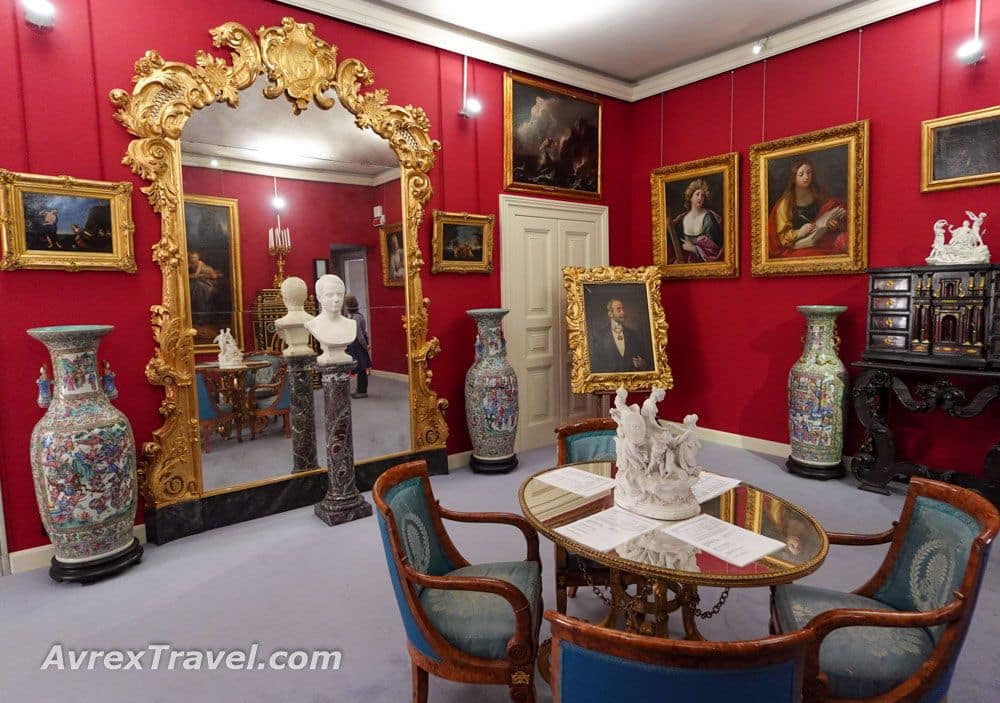Genoa: Le Strade Nuove and the system of the Palazzi dei Rolli
By Andy Vanr
What is Genoa: Le Strade Nuove and the system of the Palazzi dei Rolli?
The site is a group of 42 private palaces and their surrounding streets. The palaces, originally owned by wealthy Genoa families, were all built in the 16th and 17th centuries, as the city grew. At that time, the powerful Republic of Genoa did not have appropriate places to receive important visitors. The government decreed in 1576 that privately-owned palaces would be used by the government to entertain and house visiting dignitaries. A register (or rolli) listed the palaces and their rating based on the level of luxury and opulence. The higher the luxury level, the greater the importance of the government visitor who would be entertained there.

Disclosure: This article contains affiliate links. Making a purchase through an affiliate link will mean a small commission for this website. This will not affect your price. Privacy policy.
Why is Genoa: Le Strade Nuove and the system of the Palazzi dei Rolli a UNESCO World Heritage site?
According to its entry on the UNESCO website, the set of palaces and neighbouring streets “represents the first example in Europe of an urban development project parcelled out by a public authority within a unitary framework and associated to a particular system of ‘public lodging’ in private residences.”

The palaces themselves and the streets around them are also significant in that they form “a significant landmark in the development of Mannerist and Baroque architecture in Europe.”
What can you expect on a visit to this part of Genoa?
The palaces, located in Genoa’s historic centre, are now owned both by public bodies and private entities. We walked by many of these as we toured the streets during a day in Genoa.
The public can visit almost all of the palaces in some manner. The public buildings house museums and public services, such as the town hall. The privately-owned palaces are partially open to visitors.
There are 18 “public” palaces, open year-round. Many contain first-class museums displaying the art treasures of their previous owners. When the wealthy, aristocratic families donated the palaces to the city or state, they often stipulated their use.
Three palaces form the Strada Nuova Museums: Rosso, Bianco and Doria Tursi. Rosso and Bianco were given by the Brignole-Sale family. Rosso’s use was stipulated as a house museum, displaying the way the family used the palace. It was interesting to see how the different family members decorated their apartments within the palace. Palazzo Bianco was gifted as an art museum complete with the family’s art collection. This is a must-visit for lovers of art by Italian and northern European artists. The Palazzo Tursi today holds parts of the city’s collection of art and other memorabilia.

We also visited the Royal Palace Museum which became the home of Italy’s royal family, the House of Savoy, in the early 19th century. The set of paintings, sculptures and furniture displayed throughout creates a unique museum collection. These precious pieces were collected by the noble and royal families who lived in the palace between the mid-17th century and the early 20th century. The Hall of Mirrors is a must-see.
Are Genoa’s Strade Nuove and the Palazzi dei Rolli worth visiting?
For anyone interested in history, art and seeing how the wealthy lived from the 16th through the early 20th centuries, Genoa and the palaces are definitely worth visiting. For lovers of architecture, a walk along the streets around the palaces (Via Garibaldi, Via Balbi, Via Lomellini and Salita Santa Caterina) will be very enjoyable.

A visit to this World Heritage site, due to its size and the visitor’s area of interest, can be anywhere from two or three hours to a full day or two.
Think about booking a walking tour to get the highlights.
If time is short, a walk of the area or a visit to the Royal Palace Museum is the perfect way to visit this site.
Use the map below to book your accommodations in the center of Genoa:
Tips for visiting Genoa: Le Strade Nuove and the system of the Palazzi dei Rolli
This site encompasses a large part of the historic centre of Genoa. There is a fair bit of walking involved. Be sure to wear comfortable walking shoes. The streets have lots of cafes and restaurants to enjoy for a rest.
Several churches are nearby and worthy of a look, namely Basilica of the Santissima Annunziata del Vastato and Church of San Luca. Genoa’s Old Port is to the south and the city’s central square, Piazza De Ferrari, is to the east.
If you enjoy magnificent houses like this, another UNESCO collection is not far away to the north of Genoa: the Residences of the Royal House of Savoy.

Where is Genoa?
Genoa is on the Mediterranean Sea in the region of Liguria, Italy.
By car: Genoa is approximately 150 km (93 mi) south of Milan, Italy. By car, this a two-hour drive. Paid parking is available near the port area. Book your rental car here.
By public transportation: The rail company Trenitalia runs frequent trains between Milan and Genoa. It’s a two-hour ride to reach the city of Genoa.
By cruise ship: Genoa is a major Mediterranean port with many visitors arriving by cruise ship.
For more information about Genoa: Le Strade Nuove and the system of the Palazzi dei Rolli, see its official website, The Rolli Palaces.
Have you been to Genoa? If so, do you have any additional information or advice about this UNESCO World Heritage site? Please add your comments below!

